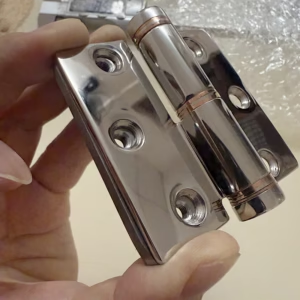Oftentimes, people looking to redesign or refurbish their homes confront a seemingly small, yet significant, architectural question: should door hinges be placed on the outside? This choice may seem trivial, but there are considerations both for and against the idea.
Yes, door hinges can technically be placed on the outside. However, the decision is not just a matter of aesthetics but involves security concerns, practicality, and architectural integrity.
With so much at stake, it’s essential to delve deeper into this question. What are the implications of this choice? And when might it be a suitable option? Let’s explore.

Practical Reasons for External Hinges
Door hinges, traditionally found on the interior side of most residential doors, serve the primary function of allowing a door to swing open and closed. When positioned on the outside:
- Aesthetic Value: External hinges can offer a unique and rustic look, particularly on doors designed to evoke a sense of history or antiquity.
- Ease of Maintenance: With hinges on the outside, tasks like lubrication or replacement can be more straightforward, without needing to open the door.
- Specialty Doors: Some specific door types, like certain barn doors or garden gates, often come with hinges on the outside, making it a natural choice for these styles.
Concerns with External Hinges
While there are reasons one might choose to place hinges externally, there are some potential drawbacks:
- Security Risks: One of the primary concerns with outside hinges is security. Malicious individuals can potentially remove the hinge pins, allowing easier unauthorized access.
- Weathering and Wear: Hinges placed outside are exposed to the elements. This can lead to quicker wear, rusting, or degradation, especially if they aren’t designed for outdoor use.
- Limited Door Design: External hinges might not be suitable for all door styles, especially modern doors which might have a cleaner, sleeker look without visible hinges.

Striking a Balance: Security Pins and Weatherproofing
If you are leaning towards having external hinges, there are measures you can take to alleviate some concerns:
- Security Pins: These are specially designed pins that cannot be easily removed when the door is closed, providing an added layer of security.
- Weatherproof Hinges: Opt for hinges designed to withstand the elements, preventing rust and ensuring longevity.
- Routine Maintenance: Regular checks and timely maintenance can ensure that your external hinges remain functional and safe for extended periods.
Conclusion
In conclusion, while door hinges can certainly be placed on the outside, the decision should be taken after thorough consideration of both the advantages and potential drawbacks. Whether you prioritize aesthetics, practicality, or security will ultimately guide your choice. Remember, every architectural decision contributes to the overall integrity and feel of a space.
You might also be interested:




